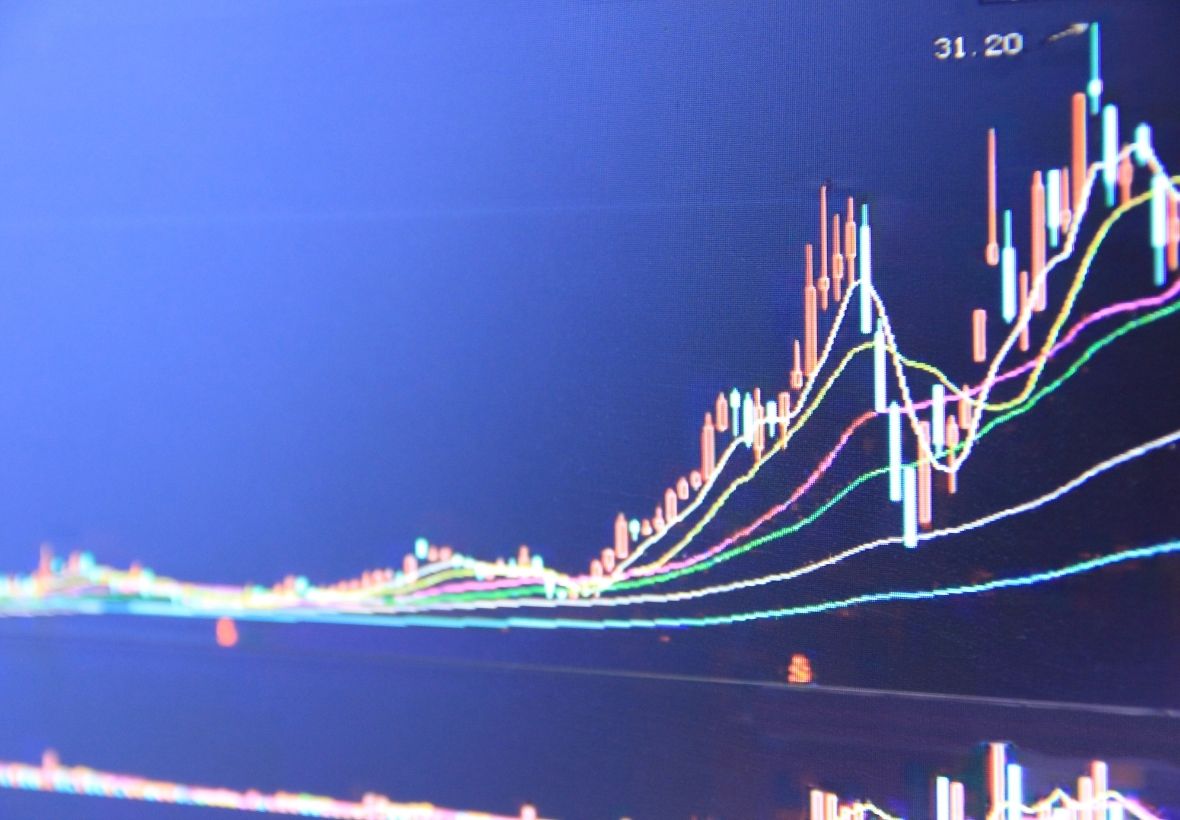With the rapid advancement of technology, automated trading bots have emerged as a popular tool among traders. These bots leverage complex algorithms and artificial intelligence to execute trades automatically, eliminating the need for manual intervention. By setting up an automatic trading bot, traders can capitalize on market opportunities 24/7 without constantly monitoring the markets.
Understanding Automated Trading Bots
Automated trading bots are computer programs that interact with financial exchanges and execute trades based on predefined rules and strategies. These bots analyze market data, such as price movements, volume, and indicators, to identify potential trading opportunities. By automating the trading process, bots can enter and exit trades swiftly, taking advantage of even minor price fluctuations.
Choosing a Trading Platform
Choosing a trading platform is a critical step when setting up an automatic trading bot. The platform you select will determine the functionalities available to you and the overall user experience. To make an informed decision, consider the following factors:
- Supported Exchanges: Ensure that the trading platform supports the exchanges where you want to execute your trades. Different platforms have varying lists of supported exchanges, so verify that your preferred exchanges are compatible.
- User-Friendly Interface: Look for a platform with an intuitive and user-friendly interface. A cluttered or complex interface can make it challenging to navigate and configure your bot effectively. A clean and well-organized interface will save you time and reduce potential errors.
- Automation Tools: Confirm that the platform offers robust automation tools specifically designed for trading bots. These tools should allow you to easily configure and manage your bot’s settings, strategies, and risk parameters.
- Backtesting Capabilities: Backtesting is a crucial feature for evaluating and optimizing your trading strategies. A trading platform with comprehensive backtesting capabilities enables you to simulate trades using historical data, giving you valuable insights into the performance of your strategies.
- Real-Time Data: Accurate and timely data is essential for successful trading. Ensure that the platform provides real-time market data, including price quotes, order book depth, and trading volume. Reliable data allows your bot to make informed trading decisions.
- Security Measures: Prioritize platforms that prioritize security. Look for features such as two-factor authentication (2FA), encrypted communication, and cold storage for your funds. A secure platform minimizes the risk of unauthorized access and protects your trading capital.
- Customer Support: Reliable and responsive customer support is invaluable when you encounter technical issues or have questions about the platform’s functionalities. Choose a platform that provides timely and helpful customer support through various channels, such as live chat, email, or phone.
- Community and Resources: Consider the availability of an active community and resources provided by the platform. Engaging with a community of fellow traders can offer valuable insights and support. Additionally, comprehensive educational resources, tutorials, and documentation can help you navigate the platform effectively.
- Compatibility and Integration: If you plan to use additional trading tools or services alongside your bot, ensure that the platform is compatible with those tools. Seamless integration between the platform and other services can streamline your trading workflow.
- Costs and Pricing Structure: Evaluate the pricing structure of the trading platform. Consider factors such as monthly subscription fees, transaction fees, and any additional costs associated with using the platform. Choose a platform that aligns with your budget and offers a transparent pricing structure.
By carefully assessing these factors, you can choose a trading platform that suits your needs and enables smooth integration with your automatic trading bot. Remember that the platform plays a vital role in your trading journey, so thorough research and consideration are essential for making the right choice.
Selecting the Right Bot
Once you have chosen a trading platform, the next step is selecting the right bot for your trading needs. Consider factors such as the bot’s performance, reliability, supported exchanges, and compatibility with your chosen platform. It’s advisable to opt for a bot that offers customization options, allowing you to tailor the bot’s strategies to your specific requirements.
Configuring the Bot
After acquiring the selected bot, you need to configure it according to your trading preferences. This includes setting parameters such as trade size, risk tolerance, and stop-loss levels. It’s crucial to define clear and well-defined rules for the bot to follow, as these rules will dictate its trading behavior.
Setting Up Trading Strategies
Trading strategies form the backbone of an automatic trading bot. Define your trading strategy based on technical indicators, market conditions, and your risk appetite. Whether you prefer trend-following, mean reversion, or breakout strategies, ensure that your bot is programmed to execute trades in line with your chosen approach.
|
Strategy Type |
Description |
Examples |
|
Trend-Following |
Identifies and follows the prevailing market trends. |
Moving Average Crossover, Parabolic SAR |
|
Mean Reversion |
Takes advantage of price deviations from the average. |
Bollinger Bands, RSI Divergence |
|
Breakout |
Capitalizes on price breakouts from support/resistance levels. |
Donchian Channel, Breakout Retest |
|
Scalping |
Focuses on making small, quick profits from frequent trades. |
Price Action Scalping, Tape Reading |
|
Arbitrage |
Exploits price discrepancies between different markets. |
Triangular Arbitrage, Statistical Arbitrage |
|
News-Based |
Reacts to market-moving news and economic data. |
Earnings Announcements, GDP Releases |
When setting up trading strategies for your automatic trading bot, it’s essential to choose approaches that align with your trading goals and risk tolerance. Here are some common types of trading strategies along with their descriptions and examples:
- Trend-Following: This strategy aims to identify and ride the prevailing market trends. Traders using trend-following strategies seek to enter trades in the direction of the established trend. Examples of trend-following indicators include Moving Average Crossover and Parabolic SAR.
- Mean Reversion: Mean reversion strategies operate on the premise that prices tend to revert to their mean or average levels after deviating. Traders using mean reversion strategies look for overbought or oversold conditions to enter trades. Bollinger Bands and RSI Divergence are examples of mean reversion indicators.
- Breakout: Breakout strategies aim to capture price movements when the price breaks through key support or resistance levels. Traders using breakout strategies anticipate that a breakout could lead to a significant price move. Donchian Channel and Breakout Retest are examples of breakout strategies.
- Scalping: Scalping strategies involve making small profits from frequent trades by capitalizing on short-term price fluctuations. Scalpers aim to execute trades quickly and capture small gains. Price Action Scalping and Tape Reading are common scalping techniques.
- Arbitrage: Arbitrage strategies take advantage of price discrepancies in different markets. Traders using arbitrage strategies simultaneously buy and sell assets in different markets to profit from the price difference. Triangular Arbitrage and Statistical Arbitrage are examples of arbitrage strategies.
- News-Based: News-based strategies rely on market-moving news and economic data releases. Traders using this strategy react to news events that can significantly impact asset prices. Examples include trading around earnings announcements or reacting to GDP releases.
Remember that these are just a few examples, and there are many other trading strategies available. It’s important to thoroughly research and understand the selected strategies before implementing them in your trading bot. Additionally, consider combining different strategies or customizing them based on your trading preferences and market conditions.
Ensure that your chosen trading platform supports the indicators and tools required for your selected strategies. By selecting and configuring appropriate trading strategies, you can optimize the performance of your automatic trading bot and increase your chances of success in the financial markets.
Testing and Optimization
Before deploying your automatic trading bot in live trading, it’s essential to thoroughly test and optimize its performance. Utilize historical market data to simulate trades and evaluate the bot’s profitability and risk management. By backtesting and tweaking the bot’s parameters, you can fine-tune its performance and increase its effectiveness.
Risk Management
Risk management is a crucial aspect of trading that involves identifying, assessing, and mitigating potential risks. Implementing effective risk management strategies can help protect your trading capital and improve your overall trading performance. However, like any approach, risk management has its advantages and disadvantages. Let’s explore them below:
Advantages of Risk Management:
- Capital Preservation: One of the primary benefits of risk management is the preservation of capital. By setting risk parameters, such as maximum loss per trade or overall portfolio, you limit the potential damage from adverse market movements. This ensures that you have sufficient funds to continue trading and recover from losses.
- Consistent Trading Approach: Risk management provides a structured and consistent approach to trading. By defining your risk tolerance, position sizing, and stop-loss levels, you maintain discipline in your trading decisions. This helps prevent impulsive and emotionally-driven trading, leading to more consistent and controlled outcomes.
- Long-Term Sustainability: Effective risk management contributes to the long-term sustainability of your trading activities. By managing risk prudently, you reduce the likelihood of significant drawdowns or catastrophic losses that could wipe out your trading account. This allows you to withstand market fluctuations and continue trading over the long run.
- Reduced Emotional Stress: Risk management helps alleviate emotional stress associated with trading. When you have predefined risk parameters and follow a disciplined approach, you minimize the impact of fear and greed on your decision-making process. This promotes a more rational and objective trading mindset.
- Improved Decision-Making: Risk management encourages you to analyze potential risks and rewards before entering trades. This comprehensive evaluation helps you make more informed and strategic trading decisions. By considering risk factors, you can avoid unnecessary risks and focus on trades with better risk-reward profiles.
Disadvantages of Risk Management:
- Reduced Profit Potential: One of the main drawbacks of risk management is that it can limit your profit potential. By implementing risk control measures such as setting conservative profit targets or using tight stop-loss orders, you may exit trades prematurely, missing out on potential larger gains if the market moves in your favor.
- Overemphasis on Risk Avoidance: Excessive focus on risk management can sometimes lead to a fear of taking calculated risks. While it is essential to protect capital, overly conservative risk management strategies may prevent you from capitalizing on profitable opportunities. Finding the right balance between risk and reward is crucial.
- No Guarantee of Success: Risk management is not a guarantee of trading success. While it helps minimize losses, it does not eliminate the possibility of losses altogether. Market conditions can be unpredictable, and unexpected events can still impact your trades. Risk management should be seen as a means of managing, not eliminating, risk.
- Complexity and Trade-Offs: Implementing effective risk management strategies can be complex and require careful consideration. Decisions regarding position sizing, stop-loss levels, and risk-reward ratios involve trade-offs and require a deep understanding of market dynamics. It may take time and experience to find the right risk management approach for your trading style.
In conclusion, risk management is a critical component of successful trading. It helps preserve capital, maintain consistency, and promote long-term sustainability. However, it is important to strike a balance between risk avoidance and profit potential and recognize that risk management alone does not guarantee trading success. By adopting a thoughtful and well-rounded approach to risk management, traders can navigate the markets more effectively and enhance their overall trading performance.
Monitoring and Adjusting
While automated trading bots can operate independently, it’s crucial to monitor their performance regularly. Keep a close eye on the bot’s trades, performance metrics, and market conditions. If necessary, make adjustments to your bot’s strategies and parameters to adapt to changing market dynamics.
Setting up an automatic trading bot can significantly enhance your trading capabilities and improve your overall profitability. By following the steps outlined in this article, you can embark on a journey towards automating your trading strategies. Remember to choose a reliable trading platform, select the right bot, configure it appropriately, and continuously monitor and optimize its performance. With dedication and careful planning, an automatic trading bot can become a valuable asset in your trading arsenal.
FAQs
Q1: Can I use an automatic trading bot on multiple exchanges simultaneously?
A1: It depends on the bot and the trading platform. Some bots support multiple exchanges, allowing you to trade on various platforms simultaneously.
Q2: Do I need coding skills to set up an automatic trading bot?
A2: Not necessarily. Many trading platforms provide user-friendly interfaces that allow you to configure the bot without coding knowledge. However, coding skills can be beneficial if you want to customize the bot’s strategies extensively.
Q3: How do I ensure the security of my funds when using an automatic trading bot?
A3: It’s essential to choose a reputable trading platform and bot that prioritize security. Enable two-factor authentication, use strong passwords, and avoid sharing sensitive information.
Q4: Can I backtest my trading strategies before deploying the bot?
A4: Yes, most automated trading bots offer backtesting features that allow you to simulate trades using historical data. Backtesting helps evaluate the bot’s performance and refine your strategies.
Q5: What are some common pitfalls to avoid when setting up an automatic trading bot?
A5: Avoid over-optimizing your bot, using excessive leverage, or relying solely on past performance. Always stay informed about market trends and be prepared to adjust your bot’s strategies when necessary.





Leave a Reply